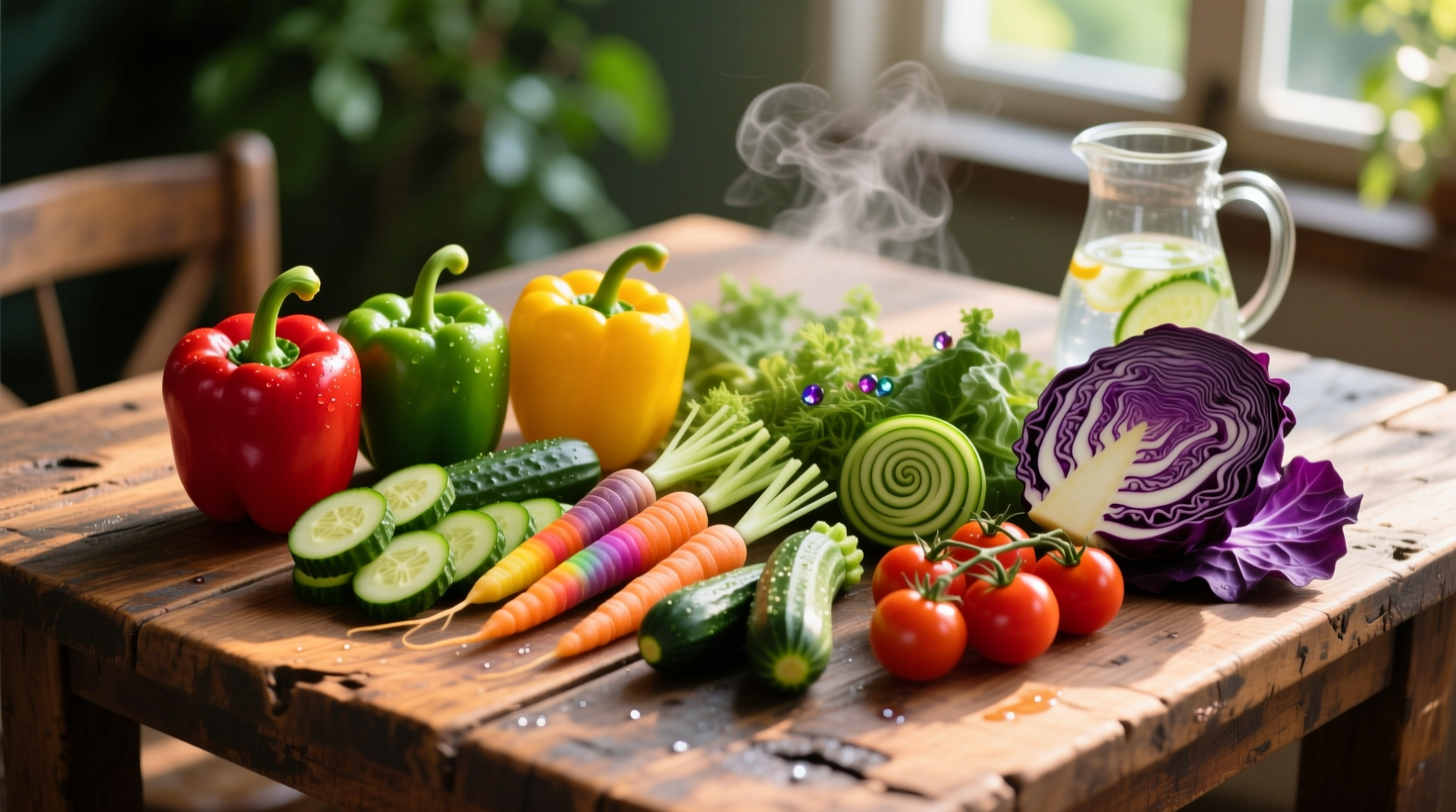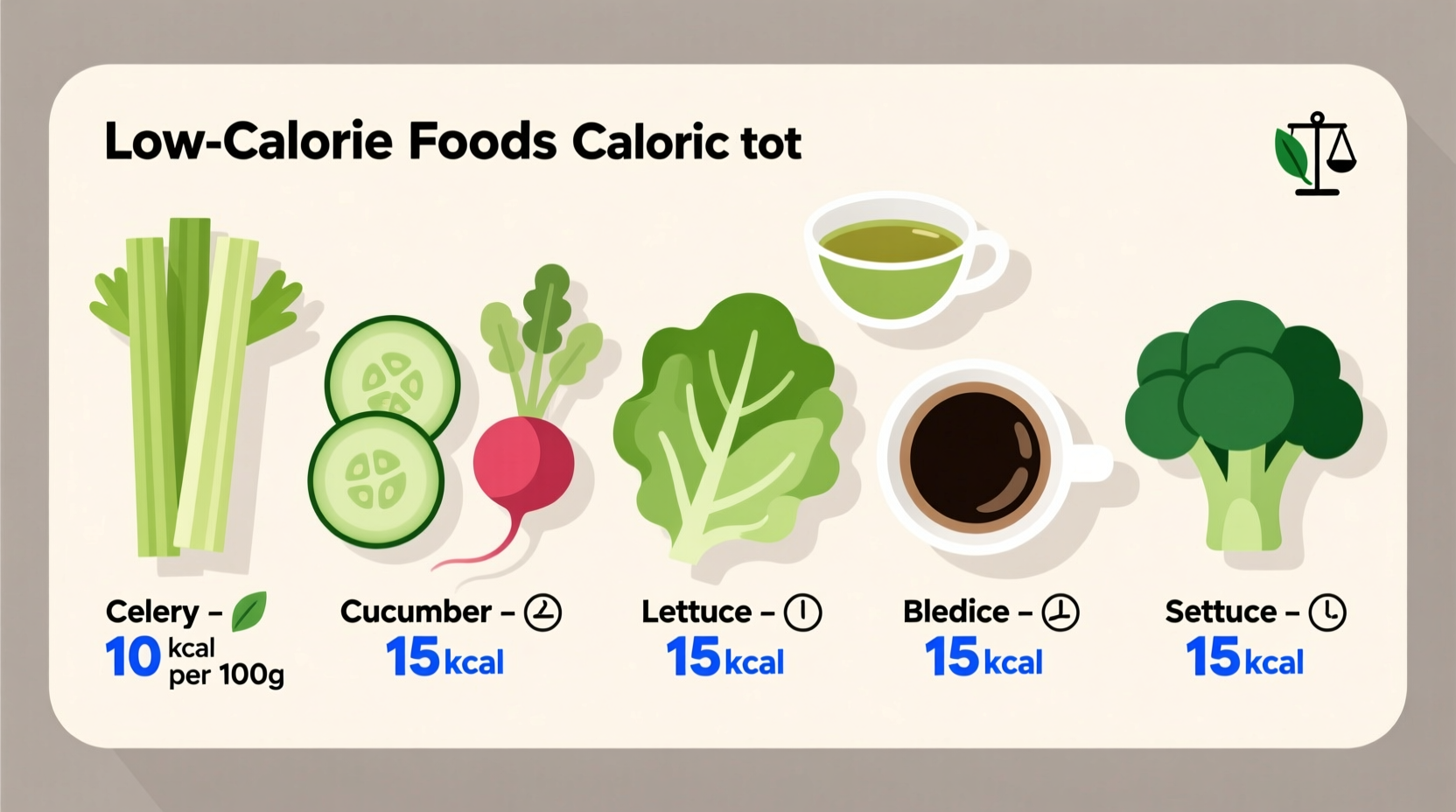When you're looking to manage your weight or simply eat more mindfully, understanding which foods contribute minimally to your daily calorie count becomes essential. Despite popular myths about "negative calorie foods," scientific evidence shows that while no food requires more energy to digest than it provides, certain foods come remarkably close to having negligible caloric impact.
What Science Says About Low-Calorie Foods
The concept of "zero-calorie" foods is somewhat misleading—technically, all foods contain some calories. However, many foods are so low in calories and high in water content that their net caloric contribution is minimal. The USDA FoodData Central database provides the most reliable nutritional information for determining which foods truly qualify as ultra-low calorie.
| Food (1 cup raw unless noted) | Calories | Water Content | Fiber (g) |
|---|---|---|---|
| Cucumber | 8 | 95% | 0.5 |
| Celery | 16 | 95% | 1.6 |
| Iceberg Lettuce | 10 | 96% | 1.0 |
| Radishes | 11 | 95% | 1.9 |
| Zucchini | 20 | 94% | 1.2 |
| Watercress | 4 | 95% | 0.5 |
Source: USDA FoodData Central, accessed September 2025
Why Water Content Matters More Than "Negative Calories"
Despite popular claims about "negative calorie foods," research published in the American Journal of Clinical Nutrition confirms that no food creates a true negative energy balance. However, high-water, high-fiber foods do have significant benefits:
- They require more chewing, which increases satiety signals
- They add substantial volume to meals with minimal calories
- They help with hydration, which is often mistaken for hunger
- They provide essential micronutrients without caloric overload

Practical Ways to Incorporate Ultra-Low-Calorie Foods
Understanding which foods have minimal calories is only half the battle—you need practical strategies to incorporate them effectively into your eating pattern:
Volume Eating Techniques
Volume eating focuses on maximizing the physical quantity of food while minimizing calories. Registered dietitians at the Mayo Clinic recommend these approaches:
- Start meals with broth-based soups (40-60 calories per cup) to increase fullness before the main course
- Add shredded zucchini or mushrooms to ground meat dishes to stretch portions
- Double your non-starchy vegetables while maintaining protein portions
- Create "everything" salads with multiple low-calorie vegetables for variety and volume
Smart Swaps for Common High-Calorie Foods
These simple substitutions can dramatically reduce your daily calorie intake without leaving you feeling deprived:
- Replace regular pasta with spiralized zucchini or shirataki noodles (20 calories per 8oz)
- Use lettuce cups instead of tortillas for tacos and wraps
- Substitute Greek yogurt for sour cream in dips and toppings
- Make "rice" from cauliflower instead of traditional white rice
Nutritional Considerations and Limitations
While incorporating low-calorie foods offers benefits, it's crucial to understand their limitations. The Academy of Nutrition and Dietetics emphasizes that relying solely on ultra-low-calorie foods can lead to nutrient deficiencies. These foods should complement—not replace—nutrient-dense options in your diet.
Certain populations should exercise particular caution:
- Active individuals need sufficient calories for energy and recovery
- Children and adolescents require adequate calories for growth
- People with certain medical conditions may need specialized nutrition plans
- Those with a history of disordered eating should work with a professional
Evidence-Based Benefits of High-Water Foods
Research from the National Institutes of Health demonstrates that increasing water-rich food consumption correlates with better weight management outcomes. A 2023 study tracking 15,000 adults found that those who regularly consumed high-water vegetables had 17% lower risk of weight gain over five years compared to those who didn't.
The mechanism appears to be threefold:
- Physical stomach distension triggers satiety signals
- Increased chewing time allows fullness signals to register
- Higher fiber content slows digestion and stabilizes blood sugar
Common Misconceptions About Zero-Calorie Foods
Several myths persist about ultra-low-calorie foods that deserve clarification based on current nutritional science:
- Myth: Celery has "negative calories" Fact: While celery is extremely low in calories (16 per cup), the thermic effect of food only accounts for about 10% of calories consumed
- Myth: You can eat unlimited quantities of these foods without consequences Fact: While difficult, it's theoretically possible to consume too many calories from even low-calorie foods when eaten in massive quantities
- Myth: All vegetables are equally low in calories Fact: Starchy vegetables like potatoes, corn, and peas contain significantly more calories than non-starchy options
Creating Balanced Meals with Low-Calorie Foundations
The most sustainable approach combines ultra-low-calorie foods with adequate protein, healthy fats, and complex carbohydrates. Here's a practical template for building satisfying, nutritionally complete meals:
- Start with 2-3 cups of mixed low-calorie vegetables as your base
- Add 3-4 ounces of lean protein (chicken, fish, tofu, or legumes)
- Incorporate 1/2 cup of complex carbohydrates (quinoa, sweet potato, or whole grains)
- Include 1-2 teaspoons of healthy fats (olive oil, avocado, or nuts)
- Season generously with herbs, spices, vinegar, or citrus
This approach creates meals around 400-500 calories that are nutritionally complete, satisfying, and support long-term weight management goals.
When Low-Calorie Foods Aren't Enough
While incorporating water-rich, low-calorie foods is beneficial, they shouldn't be your only strategy for weight management. The Centers for Disease Control and Prevention emphasizes that sustainable weight management requires a holistic approach that includes:
- Adequate protein intake to preserve muscle mass
- Healthy fats for hormone regulation and nutrient absorption
- Complex carbohydrates for sustained energy
- Regular physical activity tailored to your abilities
- Sufficient sleep and stress management techniques
Remember that extreme restriction of calories—even from healthy foods—can slow metabolism and lead to nutrient deficiencies over time. Balance remains key to sustainable health outcomes.











 浙公网安备
33010002000092号
浙公网安备
33010002000092号 浙B2-20120091-4
浙B2-20120091-4